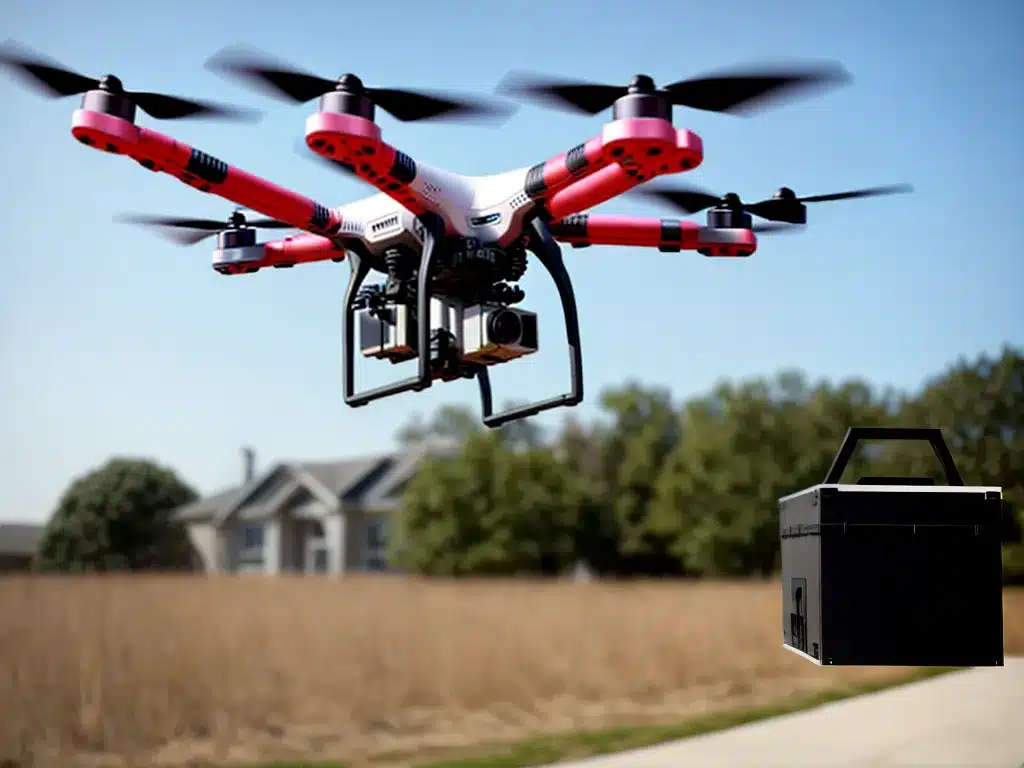
Drones Take Flight: Personal Delivery Drones Become Mainstream
Introduction
Personal delivery drones, once a far-fetched idea, are now becoming a reality. Companies like Amazon, UPS, and Google are investing heavily in drone delivery systems. While still facing regulatory hurdles, drones may revolutionize delivery and logistics in the coming years. I share my thoughts on the rise of delivery drones and their potential impact.
The Promise of Delivery Drones
Delivery drones offer several potential benefits over traditional delivery methods:
-
Faster delivery times: Drones can take direct routes and avoid traffic, shaving hours or days off delivery times. Some estimates suggest drones may be 10-30 times faster than truck delivery.
-
Lower costs: Drones eliminate certain labor costs associated with delivery driving and sorting. Fuel costs may also be lower.
-
Increased accessibility: Drones can access remote or difficult-to-reach destinations that lack roads. This helps expand access and improve last-mile delivery.
-
Environmental benefits: Drones produce fewer carbon emissions compared to trucks. This makes them a greener transportation method.
Early use cases have focused on urgent deliveries like medicine, but regular e-commerce delivery seems feasible as well. I am excited by the potential time and cost savings. Faster delivery improves customer satisfaction and may provide businesses an edge over competitors.
Major Players Investing in Drones
Several major companies are actively developing delivery drones:
-
Amazon has heavily invested in its Prime Air drone delivery program since 2013. They completed their first drone delivery in 2016 and continue testing.
-
UPS founded UPS Flight Forward in 2019 which has focused on drone delivery. They currently have FAA approval for drone airline operations.
-
Google offshoot Wing has tested delivery drones in Australia, Finland, and Virginia. They recently became the first approved drone airline in the US.
-
FedEx and Walmart have also conducted their own drone delivery trials.
Investment by these major retailers signals strong confidence in the viability of delivery drones. Their scale provides the resources needed to address technical and regulatory challenges.
Technical Hurdles for Drones
While promising, drones still face engineering and design challenges:
-
Flight range – Most drones today have ranges of only 10-15 miles due to battery limitations. Longer flight ranges are necessary for cost effective delivery.
-
Payload size – Current drones can only carry a few pounds of cargo which limits applications. Larger payloads are needed for widespread use.
-
Weather issues – Rain, wind, or extreme cold can still easily disrupt drone flight. All-weather capability is vital.
-
Safety – Ensuring drones safely and accurately deliver packages without crashes or injuries remains a challenge. More testing is needed.
Improving battery technology seems like the most critical area to focus on. Increased flight ranges and payload capacity depend on better energy storage. I am optimistic engineers can creatively overcome these hurdles in time.
Regulatory Concerns Around Drones
Beyond technical aspects, regulatory uncertainty continues to slow adoption of delivery drones:
-
Airspace restrictions – Strict FAA rules prohibit most outdoor drone flight, and waivers are required for commercial use. This limits where drones can currently operate.
-
Privacy issues – Drones with cameras raise privacy concerns about unwanted surveillance. Laws are still adapting to balance privacy rights.
-
Public safety – More research is needed to prevent drone collisions with aircraft ordropped objects injuring people on the ground.
-
Security risks – Controlling unauthorized access to drones and cyber attacks against them is critical to prevent misuse.
I hope regulators take a balanced approach that enables innovation while addressing legitimate public concerns. The economic and social benefits of drones seem to outweigh the risks. Safe testing will help develop best practices.
When Will Delivery Drones Become Mainstream?
Experts’ predictions on the timeline for adoption vary:
-
Optimistic estimates suggest limited drone delivery could occur within 5 years. This seems achievable in certain limited areas that grant waivers.
-
More conservative estimates predict 10-20 years before drones make up a sizable share of the delivery market. Regulatory constraints may slow broader adoption.
-
Pessimistic forecasts say major hurdles prevent drones from going mainstream for 30+ years. Only time will tell if challenges are addressable.
I believe we will see limited drone delivery within the next decade, but trucks will still dominate the majority of shipping for the foreseeable future. Hybrid models combining drones and land-based delivery may develop first. But drones do seem poised to disrupt delivery as battery, regulation, and design issues get resolved.
The Future with Delivery Drones
Widespread delivery drones have the potential to redefine retail and logistics. I envision a world where:
-
Instant drone delivery transforms e-commerce expectations. Customers may come to demand delivery in under an hour.
-
Expanded drone delivery networks allow faster delivery to new locations. Rural areas and islands could benefit greatly.
-
Last mile delivery shifts to drones, while trucks transport goods between hubs. A hybrid model develops.
-
Fast automated fulfillment centers with drones allow greater flexibility in inventory locations.
-
Commute patterns, city planning, and transportation systems adjust based on drone capabilities unlocking new possibilities. Sky highways with designated drone airspace emerge.
While the adjustment may be rocky, I believe society will reap tremendous gains if delivery drones live up to their full potential. The future seems bright for on-demand delivery via drones!












